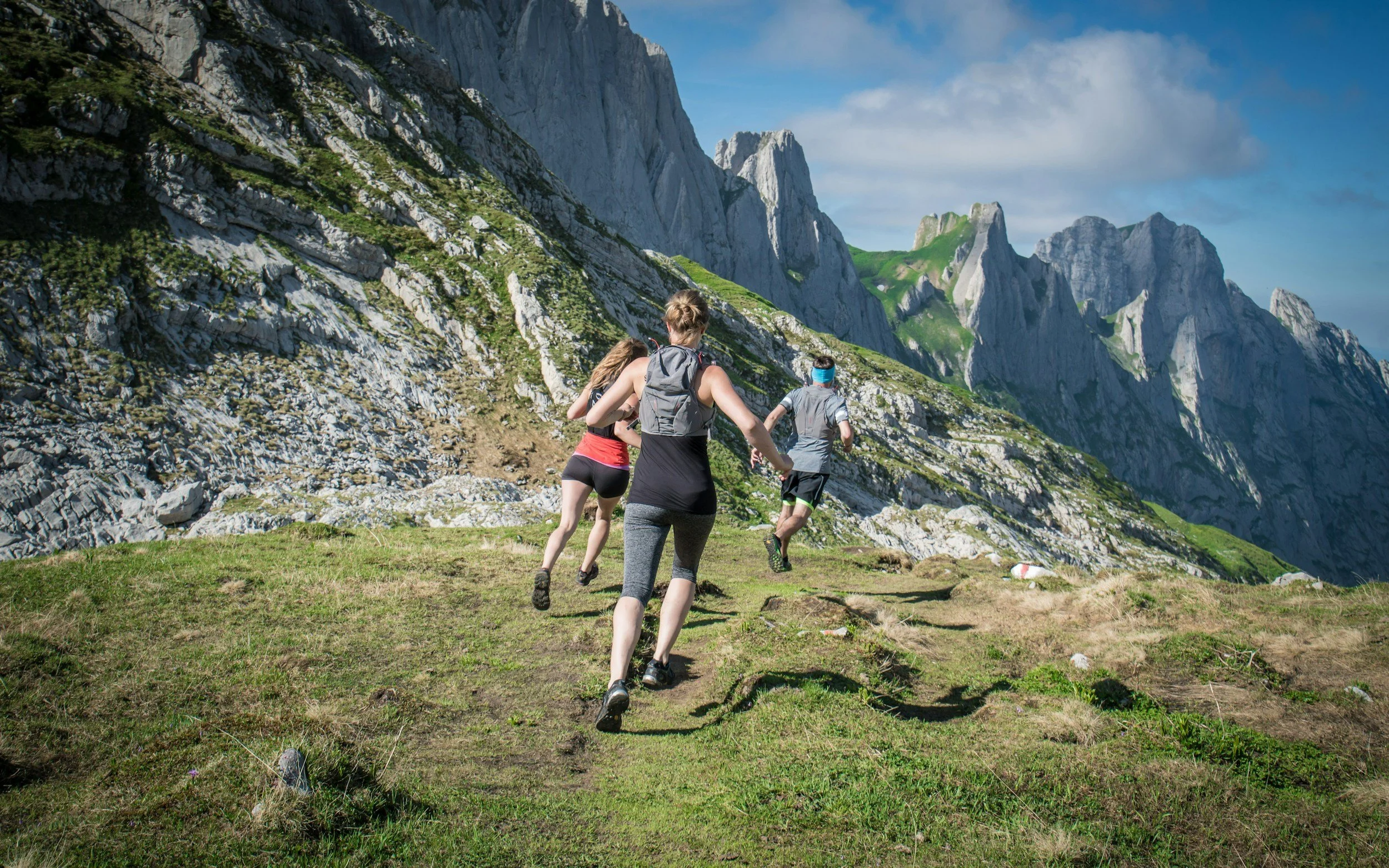Elevate Your Running Game: 7 Types of Runs to Turn You Into a Trail Beast
Whether you’re a trail-running wizard or a professional couch-to-5K procrastinator, it’s way too easy to get stuck in the rut of same-old route, same-old pace, same-old existential dread. But fear not, weary feet—mixing up your runs isn’t just fun, it’s borderline magical for your speed, stamina, and sanity. We’ve got seven types of runs that will either make you feel like a superhero or question your life choices (sometimes both), plus some gear recommendations so you don’t look like a sweaty raccoon while doing it.
*Quick note before you dive in: some links are affiliate links. This means if you click and buy, we may get a tiny commission at zero extra cost to you—basically enough to fuel more blogs, snacks, and mildly ridiculous trail selfies. We only endorse gear we’d actually use ourselves, because let’s be real, no one trusts a blogger in Crocs.
Table of Contents
1. Fartlek Runs (The Fun Run!)
What is it?
Fartlek is basically chaos with a purpose. You mix up your pace, alternating between bursts of speed and easy jogs, without a rigid schedule. Want to sprint to the next lamppost and then cruise to the corner? Go for it. Prefer to time your bursts—like 1 minute fast, 3 minutes easy—or measure by distance, that works too. The beauty of fartlek is that you’re in charge: speed up, slow down, and adjust on the fly based on how your legs (or ego) are feeling.
Why do it?
It improves both speed and endurance without the soul-crushing rigidity of formal interval workouts. You get faster, fitter, and a little more unpredictable—which is never a bad thing.
Gear Tip:
A Garmin watch keeps track of your pace, distance, and heart rate, so you can see exactly how gloriously chaotic your run actually is—without breaking your flow.
2. Tempo Runs (The 'Get Comfortable Being Uncomfortable' Run)
What is it?
Tempo runs are where you find that perfect level of suffering—faster than an easy jog, slower than a full-on sprint, and just uncomfortable enough to feel like you’re accomplishing something heroic. Typically, you’ll hold this pace for 20–40 minutes, about 20–45 seconds per mile slower than your 5K race pace. It’s basically running in the sweet spot between “I got this” and “Why am I doing this again?”—a pace you could (theoretically) maintain for about an hour without crying.
Why do it?
Tempo runs improve your lactate threshold, which translates to running faster for longer without your legs staging a mutiny.
Gear Tip:
The Topo Athletic FLI-Lyte 5 shoes are like little trampolines for your feet—light, responsive, and supportive enough to help you power through that perfectly miserable tempo pace.
3. Hill Strides (The Lung Burners)
What is it?
Hill strides are short, fast sprints up a hill that combine the speed of strides (aka pick-ups or striders) with the joy of feeling like your lungs are on fire. Warm up, pick your hill, start controlled, then gradually accelerate with each step. Focus on exaggerated form—think “athlete in a motivational montage.” Hit top speed midway, hold it to the top, then jog or walk back down to recover. Do a few repeats depending on your energy, the hill’s ego, and how much you enjoy pain. Hill strides can be a stand-alone session or an add-on to easy runs for a speed and form boost.
Why do it?
Builds leg strength, explosive power, and mental toughness—all while making you question every life choice you’ve ever made.
Gear Tip:
The Salomon Active Skin 8 Hydration Vest is perfect for carrying water without turning into a bouncing backpack disaster. Lightweight, snug, and just supportive enough to let you actually survive the hill.
4. Long Runs (The Time-on-Feet Run)
What is it?
Long runs are exactly what they sound like: slow, steady, and somehow simultaneously endless. These are your week’s endurance workhorses—hours spent on your feet, not racing, just… existing in motion. Perfect for half-marathon or marathon training, long runs focus on time over speed, helping your muscles, joints, and cardiovascular system adapt to sustained effort. Think of it as a crash course in patience, resilience, and figuring out how many snacks you can stash in your pockets without actually eating them. Depending on your plan, these runs can last from an hour to multiple hours, increasing gradually as race day approaches.
Why do it?
Boosts aerobic capacity, strengthens your body for long efforts, and gives your brain some much-needed prep for surviving hours of running without losing your mind.
Gear Tip:
The Garmin Fēnix 8 AMOLED Sapphire is a long-run powerhouse. Gorgeous AMOLED display, built-in maps, customizable data screens, and battery life that actually outlasts your willpower—everything you need to stay on course, track your stats, and survive the miles without getting lost in the wilderness.
5. Interval Runs (The Speed Demon)
What is it?
Interval runs are basically controlled chaos: short bursts of high-intensity sprinting followed by periods of recovery (jogging, walking, or dramatic flopping onto the grass). For example, sprint for 1 minute, catch your breath for 1 minute, repeat for 20–30 minutes. Or try 8 x 400m at your 5K pace, with recovery equal to the sprint—basically a rollercoaster of effort that keeps your legs, lungs, and ego all on high alert.
Why do it?
Intervals crank up your speed, push your cardiovascular fitness, and give your legs a reason to complain in a very productive way. The short recovery breaks are just enough to catch your breath… before being yelled at by your own inner drill sergeant to sprint again.
Gear Tip:
The Polar Verity Sense Heart Rate Monitor is perfect for interval workouts. It tracks your heart rate so you know when you’re in the sweet spot of “this is hard but not life-threatening” and when you’re spiraling into “oh no, I hate everything” territory.
6. Recovery Runs (The Chill Run)
What is it?
Recovery runs are the lazy cousin of your brutal workouts. After a soul-crushing speed session or race, these are the runs where your legs get to breathe, your lungs get a break, and your ego isn’t constantly screaming at you. Keep it light, easy, and almost insultingly effortless—you should be able to gossip with a stranger, sing along to your playlist, or debate life choices without wheezing. It’s basically active recovery: moving without pretending you’re auditioning for a superhero movie.
Why do it?
Circulates blood, loosens up muscles, flushes lactic acid, and gives your legs the spa day they’ve been quietly begging for. All the benefits of a run, none of the existential dread of a speed workout.
Gear Tip:
Slip into some ALTRA Womens Via Olympus 2 shoes and your joints will write thank-you notes. Cushiony, supportive, and so comfy you might consider doing a recovery run just for the shoes.
7. Progression Runs (The Negative Split)
What is it?
Progression runs are the sneaky, clever cousin of all workouts. You start slow—nice, easy, “I could stop for coffee and not die” pace—and gradually ramp up until you’re running like someone just yelled “last mile, go!” at the top of their lungs. It’s all about learning to pace yourself, conserve energy, and avoid collapsing in dramatic fashion before the finish. You get to practice smooth transitions, perfect form, and the subtle art of pretending you’re relaxed while secretly feeling like a superhero in slow-motion.
The goal isn’t just to run faster; it’s to run smarter. You want enough energy left at the end to feel like a legend instead of a puddle of sweat on the trail. Plus, these runs double as a mental boot camp: staying focused while fatigue tries to convince you to quit is basically training your brain to be badass.
Why do it?
You’ll learn how to save your energy, finish strong, and feel like a rockstar when everyone else is wobbling at mile 12.
Gear Tip:
The Coros PACE 3 is perfect for progression runs. Track your pace, monitor form, and get just enough data to justify bragging about how strong and strategic you are while running like the wind.
Final Thoughts
Every type of run has a purpose—and yes, even that weirdly slow one that makes you question your life choices. Speed workouts like intervals and tempo runs are there to turn you into a slightly terrifying, fast-moving creature. They teach your body to handle pain at pace and improve your race times, all while convincing your legs that they signed up for this voluntarily. Long runs, on the other hand, are the endurance builders: slow, steady, and slightly torturous, perfect for teaching your muscles, joints, and brain how to survive hours of running without staging a revolt.
Mixing up your runs keeps your training fresh, interesting, and less likely to make you hate life—or yourself. It also helps you figure out where you’re a beast and where you’re… not yet a beast. Use that intel to tweak your training, whether you’re chasing your first 5K PR or trying to survive a marathon without dramatically collapsing at the finish line.
And don’t forget the gear. A GPS watch tracks pace, distance, and heart rate so you can feel scientifically justified in your suffering. A hydration vest keeps you hydrated on those long, sweat-filled adventures. And the right running shoes? They can make the difference between feeling unstoppable and hobbling like a medieval peasant by mile 8.
Check out my favorite gear picks—or peek at the Alpine Sisters Trail Running Amazon Storefront—because every runner deserves to look like they know what they’re doing while actually surviving the chaos.
So lace up, embrace the variety, and enjoy the madness. Every run has a purpose, every mile counts, and every sweaty step gets you closer to crushing your goals—and maybe even enjoying it a little.
About the Author
Shannon is a certified running coach with UESCA, trail-running nerd, and professional chaos coordinator. She helps runners turn sweat and tears into finish lines, PRs, and occasionally questionable life choices.




